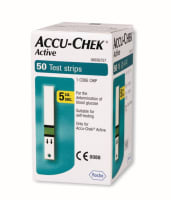NOTICE: unsafe with : Alcohol
USED FOR:
Type 2 diabetes
COMPOSITION:
Pioglitazone (30mg)
Therapeutic Uses:
anti diabetic

CAUTION
Taking pioglitazone with alcohol may affect blood glucose levels in patients with diabetes.

WEIGH RISKS VS BENEFITS
G Tase 30mg Tablet may be unsafe to use during pregnancy.Animal studies have shown adverse effects on the foetus, however, there are limited human studies. The benefits from use in pregnant women may be acceptable despite the risk. Please consult your doctor.

G Tase 30mg Tablet is probably safe to use during lactation. Limited human data suggests that the drug does not represent a significant risk to the baby.Monitor the breastfed baby’s blood sugar during treatment with G Tase 30mg Tablet

SAFE
G Tase 30mg Tablet does not usually affect your ability to drive.

SAFE
G Tase 30mg Tablet is safe to use in patients with kidney disease. No dose adjustment of G Tase 30mg Tablet is recommended.Use of G Tase 30mg Tablet is not recommended in patients undergoing dialysis.

CAUTION
G Tase 30mg Tablet should be used with caution in patients with liver disease. Dose adjustment of G Tase 30mg Tablet may be needed. Please consult your doctor.Use of G Tase 30mg Tablet is not recommended in patients with severe liver disease.
Uses of G Tase Tablet
G Tase 30mg Tablet is used in the treatment of type 2 diabetesIt is used in addition to diet and exercise to improve blood sugar control in adults with type 2 diabetes.
How to use G Tase Tablet
Take this medicine in the dose and duration as advised by your doctor. Swallow it as a whole. Do not chew, crush or break it. G Tase 30mg Tablet may be taken with or without food, but it is better to take it at a fixed time.
How G Tase Tablet works
G Tase 30mg Tablet is an anti-diabetic medication. It works by increasing the body's sensitivity to insulin, a natural substance that helps control blood sugar levels.
Common Weight gain, Blurred vision, Respiratory tract infection, Numbness, Bone fracture.
Expert advice for G Tase Tablet
G tase helps to control blood sugar level and avoids long-term complications. You should continue to exercise regularly, eat a healthy diet, and take your other diabetes medicines along with G tase. Full effect may be visible after several weeks of starting G tase. Weight gain, headache, and swelling due to fluid build-up may occur. Notify your doctor if you experience shortness of breath, heart problems, or any abnormal swelling. May not be suitable for patients with a history of heart failure or bladder cancer.
Q. Is G tase a blood thinner?
No. G tase is an anti-diabetic medication. Blood thinners are the medicine that prevents the formation of a harmful blood clot. These include medicines like Aspirin, Heparin and Warfarin.
Q. Is G tase a diuretic?
No. G tase is not a diuretic. It is used in the treatment of Diabetes Mellitus. Diuretics are those medicine which increases urination.
Q. Can G tase used in Hepatitis B infection?
Some studies have shown that G tase may be helpful in preventing Hepatitis B Virus-associated Hepatocellular Cancer (Liver Cancer). However, these findings are still very preliminary and clear role has not been established.
Q. Can G tase used in Hepatitis C infection?
G tase has been shown to inhibit Liver Cancer (HCC) recurrence in overweight Hepatitis C Virus-infected diabetic patients. It also improved insulin resistance (a state where the body is resistant to the effects and functions of the insulin hormone) in them.
Q. Can G tase used along with Vitamin D?
Studies indicate that Vitamin-D combined with G tase may be more effective in improving Bone Mineral Density and Bone Metabolism than Vitamin-D or G tase alone in the treatment of Diabetes Mellitus patients with kidney dysfunction (Diabetic Nephropathy).
Q. Can G tase be used along with sitagliptin?
Combination therapy with Sitagliptin and G tase leads to a substantial and sustained improvement in glycemic (blood sugar) control compared to the treatment with G tase alone. This is useful for patients who cannot tolerate Metformin or Sulfonylureas.
Q. Is there any role of G tase in Alzheimer disease?
Recent evidence suggests that G tase may be beneficial in Alzheimer's disease (AD), decreasing the cognitive decline early in the disease process. However, larger studies are now in progress to establish the same.
Q. Can G tase and repaglinide combined in diabetes treatment?
For patients who previously failed oral antidiabetic therapy, the combination of Repaglinide and G tase have acceptable safety, with greater reductions of glycemic parameters (blood sugar levels) than using either agent alone.
Q. Does G tase cause urinary bladder tumour?
Large population studies indicate that G tase is associated with an increased risk of bladder cancer. The absence of an association of bladder cancer with the other drug of the same class, Rosiglitazone, suggests that the increased risk is drug specific and not a class effect.
Q. Are G tase and rosiglitazone same?
G tase & Rosiglitazone both belong to a class of antidiabetics called Thiazolidinediones. Rosiglitazone has been removed from the market because using this drug was associated with increased risk of cardiovascular events like heart attack and stroke. This is not seen with G tase.
Q. Can G tase be used along with glimepiride in diabetes?
G tase when added to Glimepiride in Patients with Diabetes Mellitus, has been found to significantly reduce plasma lipid levels and significant improvement in blood pressure control related to a reduction in the insulin resistance.
Q. Is G tase a steroid?
No. G tase is not a steroid. It is an anti-diabetic medication which belongs to the class of thiazolidinediones.
Q. How to use G tase?
G tase is an anti-diabetes drug used along with a proper diet and exercise program to control high blood sugar in patients with type 2 diabetes. G tase acts as an insulin sensitizer and decreases the extent of insulin resistance in the body too.
Q. How safe is G tase?
G tase cardiovascular safety profile compares favourably with that of Rosiglitazone. G tase has been found to be associated with bladder tumours but causality assessment has not been proved yet.
Q. How does G tase cause oedema?
G tase increases the permeability of fluid in tiny blood vessels called capillaries. This results in easier movement of fluids across the membrane and their consequent accumulation, resulting in oedema (puffiness). Also, G tase causes increased sodium and water reabsorption from the kidney that contributes to the oedema.
Q. How does G tase cause bladder cancer?
The mechanism behind the link between G tase use and bladder cancer is still unknown. Studies have suggested that use of G tase for more than one year results in increased risk of development of tumour of the urinary bladder.
Q. How does G tase cause heart failure?
G tase can cause fluid retention and edema. Consequently, there is a lot of fluid in the body (fluid overload). As a result, it may precipitate heart failure (which worsens with fluid overload in those at risk).
Q. How G tase protects against atherosclerosis?
Studies in animals have concluded that G tase improves the elasticity of the aortic wall ( the aorta is a large blood vessel that arises from the heart and supplies oxygenated blood to the rest of the body). This may be a mechanism by which it protects against atherosclerosis, but more studies are needed to confirm this.
Q. Can G tase be used with insulin?
The addition of G tase reduces daily insulin dosages, but study findings have not been consistent. Improvement of lipid profiles has also been weak with this combination therapy. Long-term studies are needed before any conclusions can be reached. Combination therapy should be primarily used for patients who achieve an insufficient reduction in blood sugar with insulin alone.
Q. Which is not safe in heart failure, G tase or rosiglitazone?
G tase & Rosiglitazone both belong to a class of antidiabetics called Thiazolidinediones. Rosiglitazone has been removed from the market because using this drug was associated with increased risk of cardiovascular events like heart attack and stroke. G tase can cause heart failure too, but the risk is less that that with Rosiglitazone. Both the medicines should be avoided in heart failure.
Q. What are the alternatives to G tase?
Fortunately, there are many alternatives to G tase- Metformin, Acarbose, Sitagliptin, Exenatide, Insulin or combination therapies of these medicines can be used.
Q. Can G tase used for dementia?
Findings indicate that G tase treatment is associated with a reduced dementia risk in Diabetes mellitus patients. Prospective studies are needed to evaluate a possible neuroprotective effect in these patients in an ageing population.
Q. Can G tase used for infertility?
G tase may be of use in infertile patients with polycystic ovary syndrome (PCOS) who are resistant to conventional ovulation induction such as by drugs like Clomiphene, Dexamethasone, or Metformin.
Q. Can G tase used for psoriasis?
The use of G tase for plaque psoriasis treatment is controversial. Some studies revealed no effect of G tase 30 mg daily neither on the clinical response of moderate-to-severe psoriasis whereas others demonstrate that it could be considered as an efficacious and safe agent for the treatment of plaque psoriasis.
Q. Can G tase used for autism?
In a research study in a small number of autistic children, daily treatment with 30 or 60 mg G tase for 3–4 months induced apparent clinical improvement. G tase should be considered for further testing of therapeutic potential in autistic patients but as of now, autism is not an approved indication for G tase use.
Q. Can G tase be used in depression?
G tase, either alone or as add-on therapy to conventional treatments, could clinically benefit patients of major depression according to a study.
Q. Can G tase used for weight loss?
A recent study shows that although G tase causes a significant decrease in blood sugar, HbA1C and lipid levels, it is associated with weight gain, which would limit its utility. It has not been shown to cause weight loss.
Q. Can G tase be used to treat fatty liver?
G tase has also been used to treat non-alcoholic steatohepatitis (fatty liver), but this use is presently considered experimental.
Q. Can G tase be used for secondary stroke prevention?
G tase reduces recurrent stroke and major vascular events in stroke patients with insulin resistance, prediabetes, and diabetes mellitus. However, its use as a preventive therapy requires more research.
Mitoch Pharma Pvt Ltd
₹5.81/Tablet Out of stock


 G Tase 30mg Tablet
G Tase 30mg Tablet  Bookmark
Bookmark





















